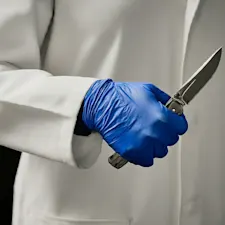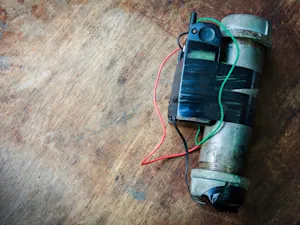
7 Inventions That Shaped Our Daily Lives
Have you ever wondered about the origins of the everyday items you can't live without? From the first squeeze of toothpaste in the morning to the last square of toilet paper before bed, these inventions have fascinating stories. Let's explore how some of our daily necessities came to be.
1. Toothpaste
 Toothpastes, as we know them, emerged in the 19th century, with mass production beginning in jars in 1873 and later in tubes in the 1890s. Surprisingly, efforts to maintain dental hygiene existed long before then. About 7,000 years ago, ancient civilizations developed tooth powders with various ingredients. The Greeks and Romans used crushed bones, eggshells, and myrrh, while the Chinese used ginseng, herbal mints, and salt. Additionally, chewing sticks called miswak were used in Arab, Babylonian, Greek, and Roman societies, and they are still used in some countries today.
Toothpastes, as we know them, emerged in the 19th century, with mass production beginning in jars in 1873 and later in tubes in the 1890s. Surprisingly, efforts to maintain dental hygiene existed long before then. About 7,000 years ago, ancient civilizations developed tooth powders with various ingredients. The Greeks and Romans used crushed bones, eggshells, and myrrh, while the Chinese used ginseng, herbal mints, and salt. Additionally, chewing sticks called miswak were used in Arab, Babylonian, Greek, and Roman societies, and they are still used in some countries today.
2. Dishwasher
 As a prominent socialite, Josephine Cochrane frequently hosted lavish dinner parties, using her exquisite vintage china. However, she was frustrated when her servants damaged the delicate plates while washing them. Determined to prevent further mishaps, she began washing the dishes herself, but quickly grew weary of the monotonous task. Seeking a better solution, she decided to invent a mechanical device to handle the chore. Cochrane's innovative design was the first to use water pressure instead of scrubbers for cleaning dishes. It included specialized racks to securely hold the dishes, eliminating the need for the user to pour boiling water over them as previous machines required. In December 1886, Cochrane was awarded a patent for her "Dish Washing Machine."
As a prominent socialite, Josephine Cochrane frequently hosted lavish dinner parties, using her exquisite vintage china. However, she was frustrated when her servants damaged the delicate plates while washing them. Determined to prevent further mishaps, she began washing the dishes herself, but quickly grew weary of the monotonous task. Seeking a better solution, she decided to invent a mechanical device to handle the chore. Cochrane's innovative design was the first to use water pressure instead of scrubbers for cleaning dishes. It included specialized racks to securely hold the dishes, eliminating the need for the user to pour boiling water over them as previous machines required. In December 1886, Cochrane was awarded a patent for her "Dish Washing Machine."
3. Refrigerator
 As agriculture developed around 12,000 years ago, people innovated ways to preserve food and prevent spoilage, using methods like salting, drying, smoking, pickling, and fermenting. Over time, various storage techniques emerged, such as burying food to shield it from sunlight, heat, and oxygen, and storing it in cool places like caves, streams, or cellars. In the 19th century, the first ice boxes appeared in England, leading to the invention of the home electric refrigerator by American inventor Fred W. Wold in 1913.
As agriculture developed around 12,000 years ago, people innovated ways to preserve food and prevent spoilage, using methods like salting, drying, smoking, pickling, and fermenting. Over time, various storage techniques emerged, such as burying food to shield it from sunlight, heat, and oxygen, and storing it in cool places like caves, streams, or cellars. In the 19th century, the first ice boxes appeared in England, leading to the invention of the home electric refrigerator by American inventor Fred W. Wold in 1913.
4. Eyeglasses
 Magnification technology existed long before glasses, with lenses made from rock crystal, like the Visby and Nimrud lenses, used for various purposes. Some theories suggest these lenses were reading aids, tools for craftsmen, or parts of early telescopes. Wearable eyeglasses were first invented in northern Italy in the 12th century, but the development of modern glasses didn't begin until the 17th and 18th centuries.
Magnification technology existed long before glasses, with lenses made from rock crystal, like the Visby and Nimrud lenses, used for various purposes. Some theories suggest these lenses were reading aids, tools for craftsmen, or parts of early telescopes. Wearable eyeglasses were first invented in northern Italy in the 12th century, but the development of modern glasses didn't begin until the 17th and 18th centuries.
5. Alarm Clock
 From early timekeeping devices, such as sundials, hourglasses, and water clocks, rudimentary attempts at morning alarms were developed. For instance, ancient Chinese candle clocks embedded with nails would release them as the wax melted, causing the nails to fall into a metal tray and create a loud noise to wake the sleeper. In 1787, Levi Hutchins, a clockmaker, invented America's first mechanical alarm clock to wake up at 4 a.m. daily. He modified one of his brass clocks to ring a bell at his desired time. It wasn't until 60 years later that French inventor Antoine Redier created an adjustable alarm clock that could be set to any time.
From early timekeeping devices, such as sundials, hourglasses, and water clocks, rudimentary attempts at morning alarms were developed. For instance, ancient Chinese candle clocks embedded with nails would release them as the wax melted, causing the nails to fall into a metal tray and create a loud noise to wake the sleeper. In 1787, Levi Hutchins, a clockmaker, invented America's first mechanical alarm clock to wake up at 4 a.m. daily. He modified one of his brass clocks to ring a bell at his desired time. It wasn't until 60 years later that French inventor Antoine Redier created an adjustable alarm clock that could be set to any time.
6. Ballpoint Pen
 Journalist Laszlo Josef Biro invented the ballpoint pen in 1938 to create a more convenient alternative to the fountain pen. He combined fast-drying ink, like the ink used in newspaper printing, with a rotating ball in a socket to prevent clogging.
Journalist Laszlo Josef Biro invented the ballpoint pen in 1938 to create a more convenient alternative to the fountain pen. He combined fast-drying ink, like the ink used in newspaper printing, with a rotating ball in a socket to prevent clogging.
7. Toilet Paper
 Ancient Rome's public toilets featured the tersorium, a wooden stick with a sponge that was cleaned in water or vinegar after use. Additionally, the Greeks and Romans used pessoi, small stones or ceramic fragments, as a toilet paper alternative. Evidence of ancient hygiene practices was also found along the Silk Road in China, with 2,000-year-old bamboo sticks wrapped in fabric strips. While rice-based toilet paper was mass-produced for China's imperial family in 1393, the USA didn't start mass-producing toilet paper until 1857, over 450 years later.
Ancient Rome's public toilets featured the tersorium, a wooden stick with a sponge that was cleaned in water or vinegar after use. Additionally, the Greeks and Romans used pessoi, small stones or ceramic fragments, as a toilet paper alternative. Evidence of ancient hygiene practices was also found along the Silk Road in China, with 2,000-year-old bamboo sticks wrapped in fabric strips. While rice-based toilet paper was mass-produced for China's imperial family in 1393, the USA didn't start mass-producing toilet paper until 1857, over 450 years later.
Each of these items has a unique origin story that reflects human ingenuity and the evolution of technology. Next time you use one of these everyday essentials, remember the long history of innovation that has made your daily routines so much easier.
References:Toothpaste, fridges, specs and toilet paper: What did people do before they were invented? | Who Invented These Everyday Items | The History of Dishwashers | How Did People Wake Up Before Alarm Clocks?























